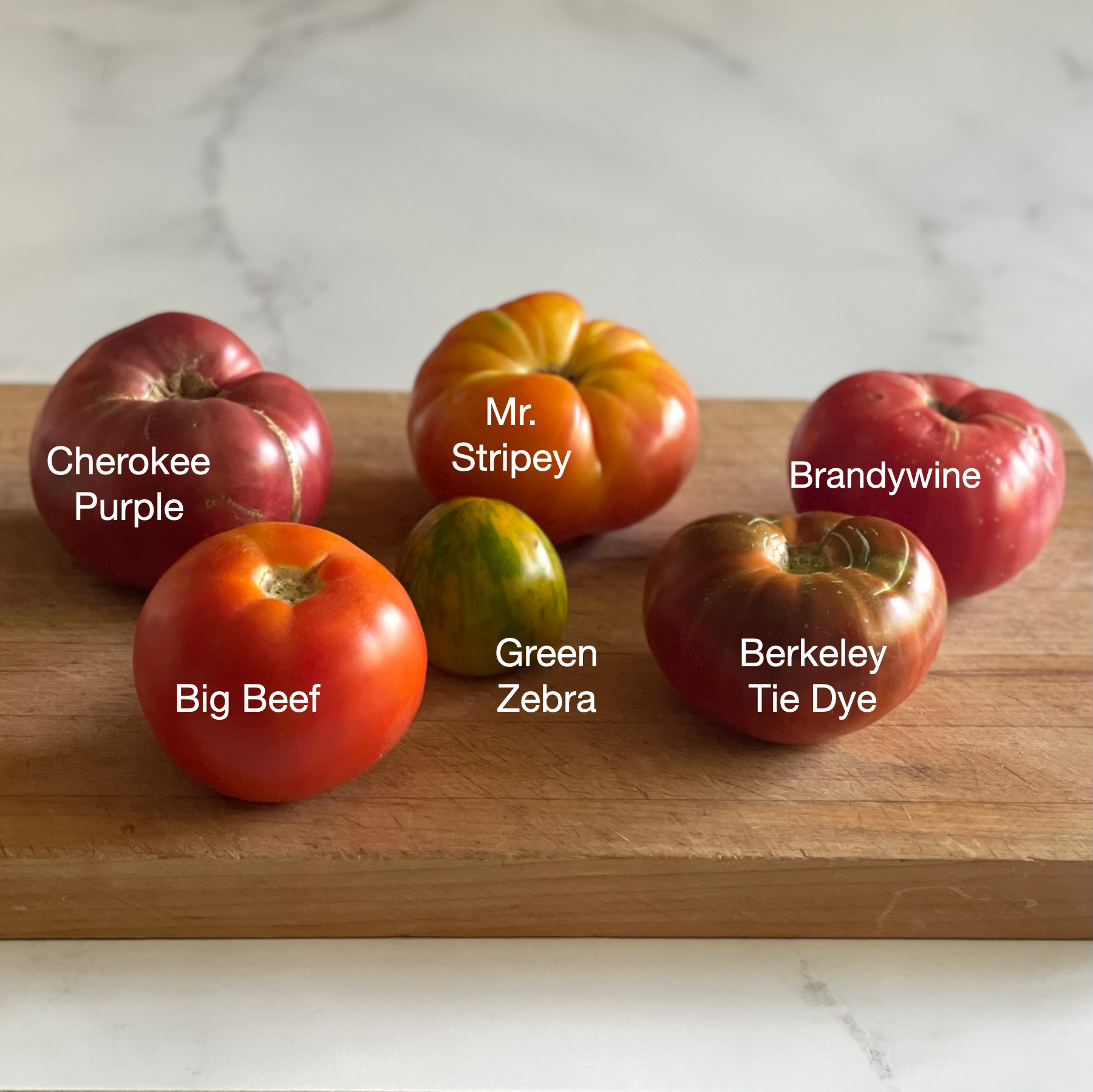
The Best Extra Virgin Olive Oil for Insalata Caprese
At the beginning of summer I was confident about my olive oil pairing choices around tomatoes. With its naturally tomato leaf aroma and tomato-esque flavor, Picual seemed obvious. I also thought that Coratina would be too bitter. As for milder Ascolano and Arbequina...sure, why not? Abundant local tomatoes and their myriad flavors and textures had me musing, so instead of a recipe this week, I'm sharing tomato thoughts instead. I'll leave my olive oil (and vinegar) comments for the end.
Insalata Caprese Originale

If you visited Campania 100 years ago crossing from Sorrento to the Isle of Capri, you might have been treated to a tomato salad that looked similar to the one we photographed above--simple red tomato slices with matching white rounds of local mozzarella.
One of the several apocryphal stories about the origin of Insalata Caprese is that it was developed as part of a tourist promotion by the resorts there. Capri had been a resort destination since Roman times, so tourist promotion was deeply part of the culture. Italy had only been unified for a few decades by that time, however, Il Tricolore, the national flag, the Bandiera d'Italia with its equal bands of green, white, and red, moved steadily from a regional banner into a symbol of national unity between 1797 and the actual creation of an Italian nation state in 1861. Adding the basil to this salad as a flourish was not only delicious, it also had the effect of honoring the flag and representing the new concept of Italian national pride.
Heirloom Tomatoes Reach New Heights

As more of us garden, shop at farmer's markets, and seek novel sensations, the original Caprese salad has faded from view and the salad shown above (made using the six tomatoes labeled at the top of the page) has risen in prominence. This presentation is the antithesis of the staid, almost sterile, rounds of the original version.
This utterly 21st century salad is so well known we no longer even say "insalata" in front of "Caprese". Not unlike when the best mortadella in Italy came from Bologna and became so famous it is no longer called mortadella...it is now known solely by its place name of Bologna (baloney). Today a "salad in the style of Capri" is just "Caprese".
Here the various shaped colors and textures of tomato are arrayed in a fanciful layered style, the traditional mozzarella is frequently replaced by the creamier Pugliese variant called burrata from 150 miles away, and the basil torn and tossed with a casual abandon. I love how olive oil settles in the cheese's rough places and mixes readily with the creamy inside.
Gimme Somma that Balsamic Vinegar

Balsamic Vinegar is not automatically part of a meal when traveling through Italy, because it is not Italian--it's Modenese--yet Americans love traditionally made balsamic vinegar on salad. It's expected! For many it's required, and although not traditional in Capri, it is indeed quite tasty.
What a marvelous symbol of Italian unity this has evolved into; from a nod to colors, to the notion that a modern Insalata Caprese often has a Pugliese element and even a Modenese component.
The Best Extra Virgin Olive Oil for Insalata Caprese
How do you describe the flavor and aroma of a tomato--or an apple, or grape, or olive for that matter. I suppose we all have a sort of default range of attributes so we can readily identify "tomato" as distinct from "garlic" or "oranges". Yet within the world of tomatoes (and olives) there can be a wide range of flavors and aromas.
My bias that Picual was the most suitable pairing was woefully ill-thought, only thinking to layer similar flavors and not considering the beauty of contrast and the unexpected pleasure that two flavors together can and do create a third flavor.
I did not taste all tomatoes with all oil combinations tonight, however, I did cut into one of the "Big Beef" tomatoes as it is a likely variety you'll find in your market, and I enjoyed it first with Picual and then with Coratina. The Picual delivered lovely layered tomato flavors as expected--smooth and truly complimentary. I stand by my original recommendation. The Coratina danced on my tongue. The combination of this tomato's flavors with the bitterness of Coratina did not make the tomato more bitter--it made its aroma more floral and the flavor rather spicy and exciting. Five Stars!
Conclusion
Taste, dear hearts, taste! A good olive oil truly does transform food, and who's to say that there is a single "right" olive oil for your tomato salad. I am motivated to keep tasting this week and will put more time into thoughtfully trying my different oils with different types of tomatoes. In the meantime, I'd love to hear your thoughts. Let's have a conversation! Leave me a comment below.
De gustibus non est disputandum--in matters of taste, there can be no disputes". Enjoy!
-----------------------
All tomatoes used in these photos were sourced from a local farming family who run Julia's Fruit Stand just north of Corning.





